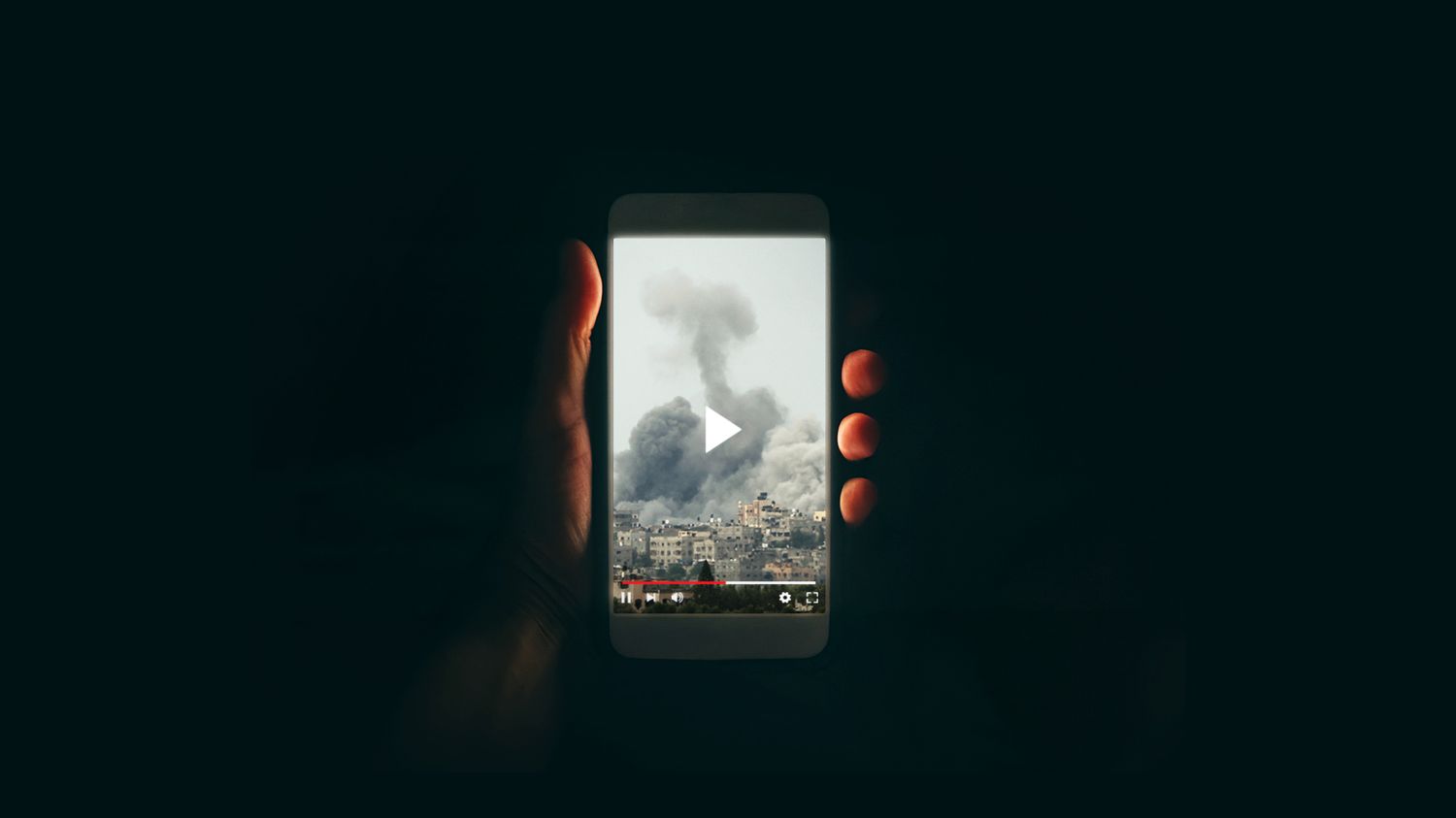Since October 7, hostilities between Hamas and Israel have been the subject of a surge of conspiracy theories and disinformation on social networks. This unprecedented wave of conspiratorial content is putting the platforms’ moderation policies to the test, which have already been singled out.
Since the Hamas attack in southern Israel on October 7, social media has been flooded with disinformation. In just a few hours, platforms like Twitter and Tiktok have become the terrain of a real communication war. And among this false information, we find numerous conspiracy theories: the thesis of fabricated terrorism, images borrowed from other conflicts, propaganda or even disinformation tinged with anti-Semitism.
Rudy Reichstadt explains that the attack of October 7, and its aftermath in Israel and the Gaza Strip, brings together “all the ingredients conducive to the appearance of a conspiratorial version“. He quotes thus “the surprise, the scale of the attack which puts us in a state of astonishment, but astonishment is capable of paralyzing reflection“. In this context, conspiracy theorists therefore take turns bringing their own analysis to this conflict which has lasted for more than seventy years. Conspiracy influencer Valerian Ronzeau notably published a video on Twitter on October 9 in which he cast doubt on the attack, explaining that, in his view, Israel has an army too powerful to be vulnerable.
We find this type of theories “almost every attack“, recalls Rudy Reichstadt, director of Conspiracy Watch. Tristan Mendès-France also notes that the American extreme right tried, as early as October 16, to “push the hashtag #BibiKnew into trend on X (formerly Twitter), implying that Israeli Prime Minister Benjamin Netanyahu knew“even”would have truly organized these attacks because he was facing internal protests linked to his justice reform“.
An unprecedented wave of misinformation and conspiracy theories
This conspiracy mechanism was implemented very quickly and on an unprecedented scale. “A few days after September 7, X reported that in 48 hours there had been 50 million posts, which is phenomenal“, indicates Tristan Mendès France. For the associate lecturer at the University of Paris specializing in digital cultures”this phenomenal volume around this sequence represents an opportunity for audiences and visibility for promoters of disinformation and conspiracy theories“.
“Emotion is conducive to unverified or poorly verified information content”
Rudy Reichstadtfranceinfo
These contents are not necessarily the prerogative of conspiracy theorists. Some Internet users relay them without being fully aware that they are in reality conspiracy theories. Rudy Reichstadt thus highlights the difference between “active, intentional disinformation with the aim of misleading the public and misinformation which is to be exposed to false information and sincerely believe it“. For Tristan Mendès France precisely “that most of the conspiracy theories and disinformation that we see circulating are the work of people who are victims of misinformation“.
Faced with this observation, Rudy Reichstadt calls for the greatest caution. He encourages Internet users to take a step back before reacting immediately: “When we have sensationalist information, likely to arouse extreme emotion such as anger or terror, let us be wary; when there is a lack or scarcity of sources for information, let us be vigilant“, he insists.
“War between Israel and Hamas, a new conspiratorial moment”, this is the 54th episode of Complorama with Rudy Reichstadt, director of Conspiracy Watch, and Tristan Mendès France, lecturer and member of the conspiracy observatory, specialist in digital cultures. A podcast to be found on the franceinfo website, the Radio France application and several other platforms such as Apple podcasts, Podcast Addict, Spotify, or Deezer.
